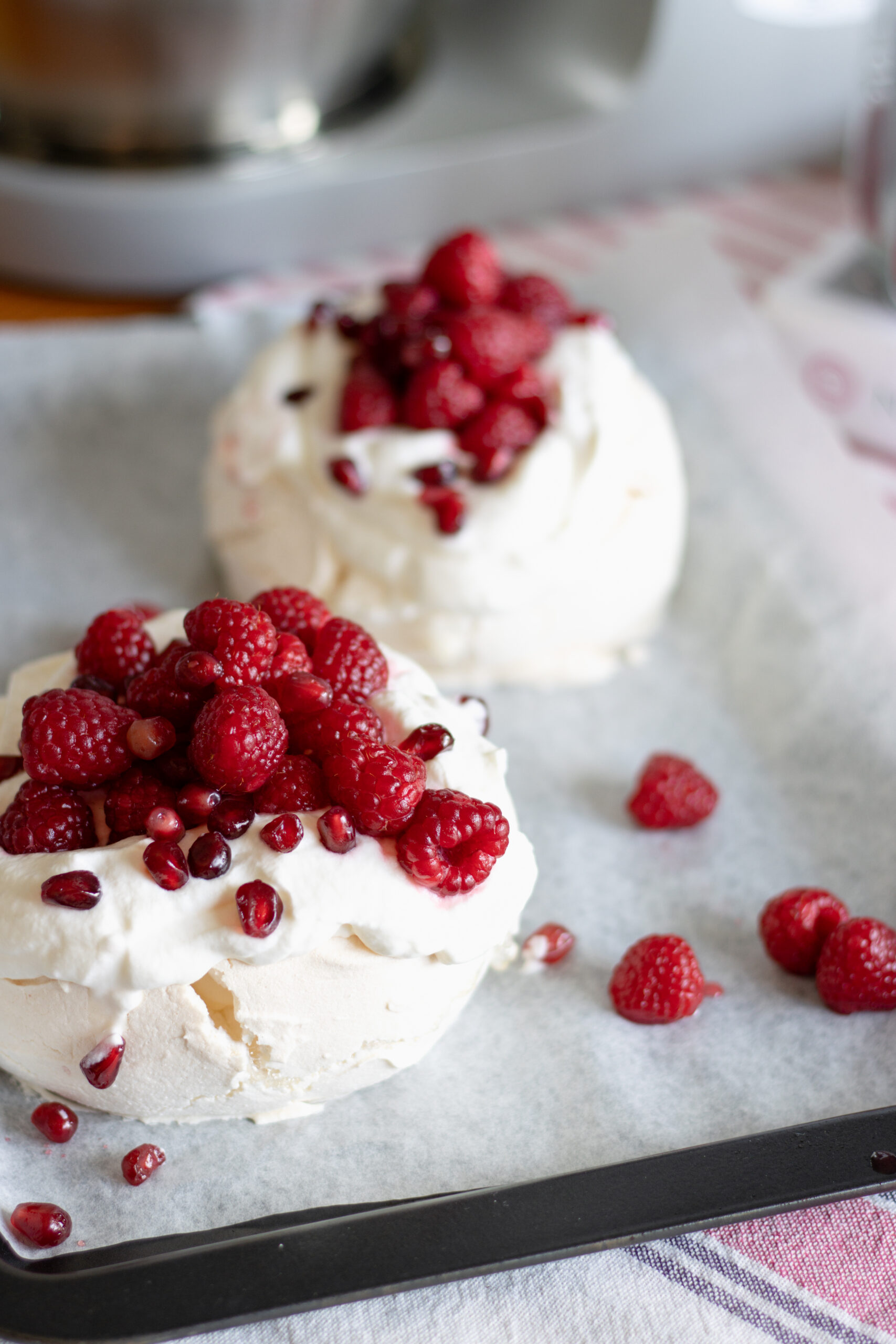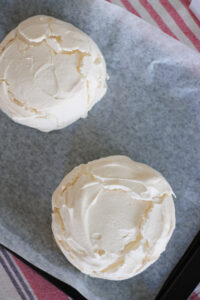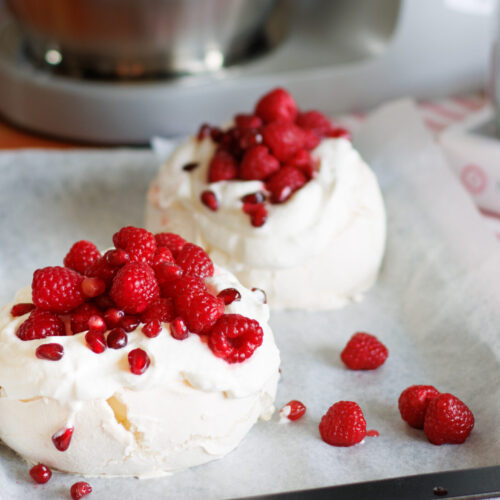Mini Rose & Raspberry Pavlovas

Quintessentially Australian, served at Christmas, a Sunday lunch, or a special dinner for two, these Mini Rose & Raspberry Pavlovas promise a fragrant marriage of soft, chewy marshmallow and crisp meringue shards, luxuriously smothered in pillowy wiped cream for a textural sensation. The addition of rose essence seems to provide even more depth to the already floral scent of the raspberries and is a match made in heaven. 
Making pavlova is really a relaxing experience, yet a very satisfying one. There is something magical about whipping up a smooth, silky meringue, before dolloping over cream or lemon curd and fixing it up with all kinds of seasonal fruits. It always turns out to be a showpiece. This recipe serves as a base recipe and can be used to make any variation of pavlovas. When it comes to selecting toppings, anything goes! Use whatever is fresh and in season. What I will say is, I find acidity to elevate a pavlova – something about pairing tartness with sweet meringue just makes sense.
I made these mini pavlovas as part of my “Valentine’s Day” collection, but they can easily be turned into a 30cm pavlova to serve a crowd! Simply double all the ingredient quantities and bake for 1 hour, instead of 45 minutes. Whip up 300ml of whipping cream and up the quantities of your fruit toppings. It will easily serve 6 people.
Remember, pavlovas will almost always form large cracks and shards. So, don’t worry about cracks in your pavlova – this is the way they are meant to look and it is in turn these shards that make pavlovas look spectacular.

Notes on make-ahead and storage:
The meringue base can be made up to 1 day in advance and stored in an airtight container after thoroughly cooled. Adding the cream, curd, and fruit should be done right before serving as it will soften the meringue as it rests.

Mini Rose & Raspberry Pavlovas
Ingredients
- 3 large eggs separated, whites only
- 180 g castor sugar
- 1¼ tsp cornflour
- 1 tsp white vinegar
- ¼ tsp rose extract
- 160 g raspberries
- 2 tbsp lemon juice
- 80 g pomegranate seeds optional
Instructions
- Preheat the oven to 160°C Fan/ 180°C. Line a baking sheet with parchment paper.
- In the grease-free bowl of a stand mixer or by handheld electric mixer, whip the egg whites over high speed until they form firm peaks. Now, patiently add the sugar, one spoonful at a time, and continue whisking until the meringue forms firm, shiny peaks. The meringue is ready once all the sugar has been incorporated and it has thickened and become glossy.
- Sprinkle over the cornflour and vinegar - it is these two ingredients that transform a meringue into a marshmallow-like pavlova. Use a spatula to gently fold in the cornflour and vinegar, followed by the rose essence.
- Divide the meringue and transfer it to the prepared baking sheet. Using an offset spatula, form the meringue into two equal disks, smoothing out the side and top as you go. Place the pavlovas in the oven and immediately turn down the temperature to 130°C Fan/ 150°C. Bake for 45 minutes (or 1 hour if making a full-size one) until crisp and slightly golden on the outside. Remove from the oven and allow to cool gently. If you feel your kitchen is too cold, cover it loosely with a kitchen towel. The pavlova may crack severely as it cools, don't worry! It is meant to.
- To macerate the raspberries, add them to a bowl with the lemon juice and 1 tsp sugar. Stir together and allow to cool in the fridge for at least 30 minutes.
- Once the pavlovas are cooled completely, add the cream to the bowl of your mixer and sprinkle in 1 tsp of sugar. Whisk on high speed until light, soft peaks form. The cream may easily be over-whipped and separate, so keep a close eye.
- Once you are ready to serve, dollop the softly-whipped cream over the pavlovas and arrange the raspberries and pomegranate seeds, I like to add them in clumps. Serve immediately.
Notes
- Make ahead note: The meringue base can be made up to 1 day in advance and stored in an airtight container after thoroughly cooled. Adding the cream, curd, and fruit should be done right before serving as it will soften the meringue as it rests.
- Cracks: The pavlovas will crack as they cool down - this is normal. If your pavlova collapses completely, invert it and use the more stable base as your top layer. Allowing the pavlova to cool slowly and gently will help prevent the pavlova from collapsing.
- When whipping the cream, keep a close eye to prevent over-whipping it as this will cause the cream to separate and become watery which will soften the pavlova too quickly.

